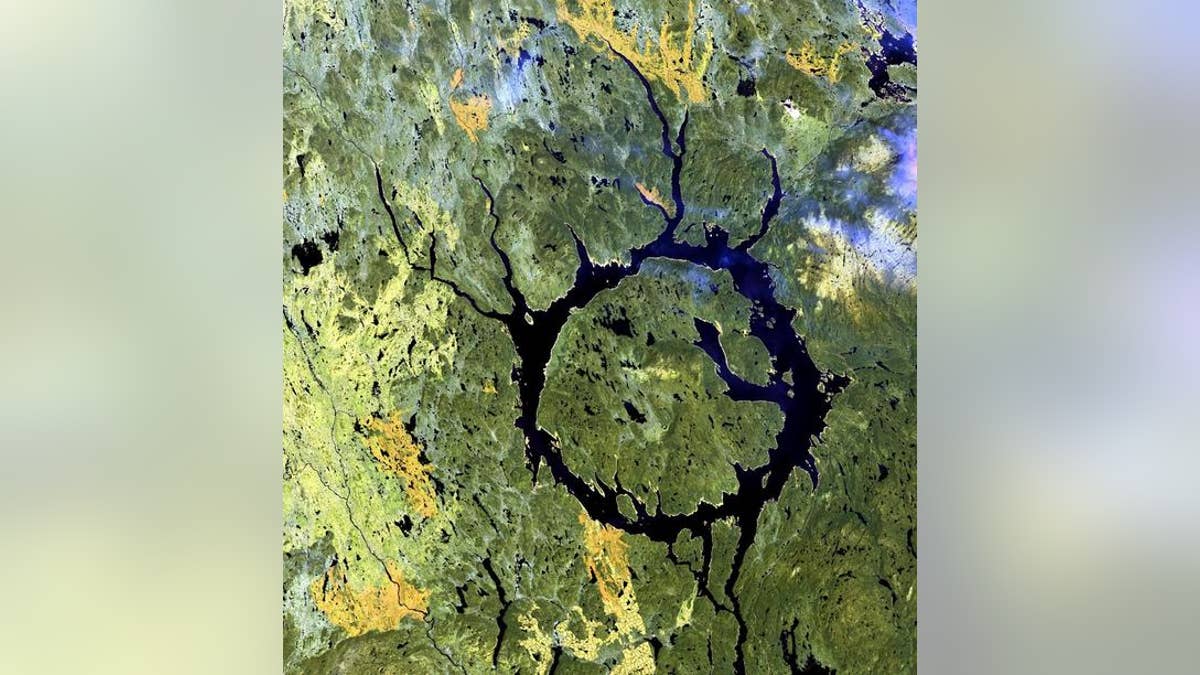
Manicouagan crater (Landsat)
A rare mineral known from just three massive meteorite impacts has now turned up in a Wisconsin crater.
Researchers discovered the mineral, called reidite, at the Rock Elm impact structure in western Wisconsin. Reidite is a dense form of zircon, one of the hardiest minerals on Earth.
This is the oldest reidite ever found,, said Aaron Cavosie, a geochemist at the University of Puerto Rico in Mayagez. The Rock Elm meteorite crater is 450 million to 470 million years old, he said.
Scientists first discovered the unusual high-pressure zircon in a laboratory in the 1960s. Reidite was finally identified in nature starting in 2001, at three impact sites: the Chesapeake Bay Crater in Virginia, Ries Crater in Germany and Xiuyan Crater in China.
The reidite was an utterly unexpected find for Cavosie, who was collecting zircons to establish a more precise impact age for the Rock Elm crater. "No one in their right mind would have looked for reidite in sandstone," he told Live Science. The Rock Elm crater was gouged out of carbonate rocks and sandstone that contains tiny fragments of quartz and zircon. The earlier reidite discoveries were all in impact melt breccias a mix of rock that melted and cooled into glass during the impact and unmelted rock fragments. [Crash! The 10 Biggest Impact Craters on Earth]
"I work with the oldest zircons on Earth, and reidite is so much rarer than 4.4-billion-year-old zircons," said Cavosie, who presented the results of the research Oct. 22 at the Geological Society of America's annual meeting in Vancouver, British Columbia.
Zircon morphs into reidite when shock waves from meteorite impacts hike up pressures and temperatures to extreme levels, equal to those deep inside the Earth where diamonds form. The pressure makes minerals tightly repack their molecules into denser crystal structures. Reidite has the same composition as regular zircon but is about 10 percent denser.
The specks of reidite Cavosie spotted are smaller than the diameter of a human hair and are scattered within "shocked" zircons that were fractured during the Rock Elm impact. But each mineral reflects light differently, which caught Cavosie's eye as he examined slices of rock under a powerful microscope. Working with colleagues in Australia, Cavosie confirmed the presence of reidite by zapping the tiny zircons with electrons. Every mineral scatters electrons in a unique way, and the tests confirmed the presence of reidite, Cavosie announced in Vancouver.
"This is a cool find in the realm of high-pressure metamorphism," Cavosie said.
It takes incredible pressure to transform zircon into reidite, so the mineral's presence means the Rock Elm crater underwent much higher shock pressures than originally thought, Cavosie said. The transition to reidite takes place anywhere between 30 and 80 gigapascals. Earlier pressure estimates from the crater's shocked quartz topped out at 10 gigapascals, according to previous studies.
Any impact crater carved from sandstone will also have zircon, and Cavosie now thinks reidite is likely more common than scientists previously thought. "It's now time to look for it where we never would have anticipated finding it," he said.
Copyright 2014 LiveScience, a TechMediaNetwork company. All rights reserved. This material may not be published, broadcast, rewritten or redistributed.
